Any kind of installation around the house needs proper knowledge and understanding. Not only do you know the basics about the structure of the items, but you also need to know the correct fittings and positioning.
When installing shower fittings, many people forego the height of the shower valve. When realization strikes, it is probably too late to go back. Installing a shower valve means that you want it positioned in a way that offers maximum comfort while showering.
You don’t want it to be too low, or you don’t want to be too high as well. However, to find the best height for the shower valve fitting, you need to consider the kind of showerhead you use.
This article will explore all the details about installing a shower valve, the ideal height, and the tips to keep in mind.
What Is A Shower Valve?
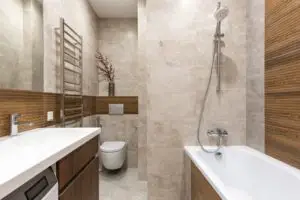
A shower valve is a fitting for a shower that controls the water flow and the temperature. Proper installation of a good-quality shower valve prevents drastic temperature fluctuations and water pressure.
The most traditional type of shower valve is the mixing valve. These directly draw the water from the cold and hot taps, standard in older homes.
Besides these, there are thermostatic valves and pressure balancing valves too. They come with additional benefits and make taking a shower very comfortable and enjoyable.
Diverter valves and transfer valves are also gaining more and more prominence. The transfer shower valves allow the water to flow through multiple outlets and are often quite complicated to install.
Why Does Shower Valve Height Matter?
The shower valve height matters a lot more than you can think of. Besides the optimal fit, the correct height contributes to optimal comfort while showering.
If the shower valve fitting height is ideal, you won’t have to bend down or reach high up to shower. Having the shower valve too high will gravely affect the water pressure from the shower. So, knowing the correct height can make a lot of difference.
Heights for Shower Fittings
When installing the components in a shower, there are two primary parts – the showerhead and shower valve. Both need to be at the correct height to ensure the user has an easy and comfortable showering experience.
Let us discuss them separately.
Standard Shower Head Height
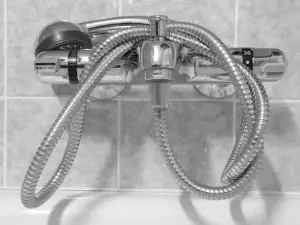
Knowing about the shower head height is crucial if you are into plumbing or professional contracting. Typically, the standard shower head height is 80 inches. This is ideal for most families and the average height of people living in the United States.
However, if asked, the minimum shower head height is 72 inches. Anything less than that will result in discomfort and poor water pressure.
The placement and showerhead height can also be different if the family has specific requirements. Besides that, we’d recommend following the standard requirements only.
Standard Shower Valve Height
The average range is up to 50 inches off the ground in the shower valve height. However, if the fitting is for families with below-average height, the shower valve height can be lowered to 30 inches off the ground.
Shower valve heights are often installed according to the family’s needs and requirements. The same is different for the tub valve settings.
Shower Head and Shower Valve Height Distance
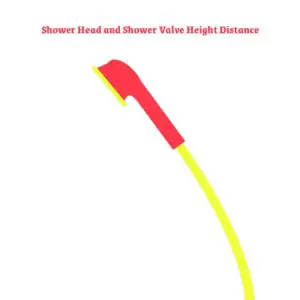
Now that you have an idea about the standard height of the showerhead and shower valve, what about them together? What is the ideal distance between the two?
Typically, most professionals suggest installing the shower valve in the midpoint of the showerhead and the ground.
So, if your shower head is at 80 inches from the ground, install the shower valve around 40 inches from the ground. This evens out the spacing and looks very clean on the bathroom walls.
Remember that these measurements vary if it is a tub-shower fixture. In that case, you’d have to alter the height based on the available space in the shower space.
What Determines the Distance Between Shower Fittings?
Keep the following factors into consideration when determining the distance between shower fittings in the bathroom:
Taking Your Family’s Height Into Account When Choosing Shower Valve Height

Being considerate of your family’s height is essential before shower fittings. If your family is mostly taller individuals (above 6 feet), the minimum shower valve height of 72” might not suffice and won’t be comfortable.
However, if you are a family of average-height people with children. Some contractors also install the shower valve and showerhead according to the needs of the family members, so that can be arranged as well.
Ideally, when looking into your family’s height, you want to choose a shower valve that will be within comfortable reach of almost every person in the family.
Try Adjustable Height Shower Valve
When determining the distance between shower fittings, look into adjustable height shower valves. They are convenient and versatile, especially in homes where everyone’s showering habits are different.
Having access to an adjustable height shower valve allows every family member to have a comfortable showering without compromising the water pressure, temperature, etc.
What are the Types of Showers?
Before you get confused thinking we are highlighting the different shower types and tubs, let us clarify things. We will focus on the shower fittings, including the showerhead and the shower valve in this subcategory.
Having access to good-quality shower fittings enhances the overall showering experience.
Types of Shower Valves
As we highlighted at the beginning of the article, there are a few different types of shower valves. There are the traditional mixer valves, and then you have a few of the modern choices available in the market.
Let us walk you through each of them in detail:
Mixer valve
This is a traditional shower valve that features two operational valves. You have one that manages the hot water and the other for the cold-water discharge. They are not typically found in the newer constructed homes and bathrooms anymore.
Pressure balance valve
This one features a single valve that is adjustable to manage the hot and cold temperature that comes out of the showerhead. It is pretty easy to use and doesn’t have as many complications as the mixer valve.
Thermostatic valve
If we had to point out a technologically advanced option, this one has to take the cake. This shower valve features digital functions and has a temperature on the gauge. You can adjust the temperature with the help of a spinning dial; that’s how modern and convenient this valve is to use.
Types of Showerheads
Moving on from the shower valves, even the showerheads play a crucial role in the showering experience. There are quite a few variants to choose from, including:
Single-spray showerhead
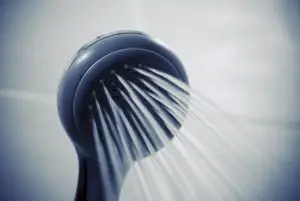
If you are going to a cheaper option, this is the best choice. They are stationary and attached to the bathroom wall with a single-spray outlet. You can’t adjust the water flow or pressure from this showerhead, hence the affordable price.
Detachable showerhead
Just like the name suggests, detachable showerheads are comfortable to use and can help you wash your body with optimum flexibility. Since it isn’t stationary, you can take it from the wall mount and spray your body according to your needs.
Rainfall showerheads
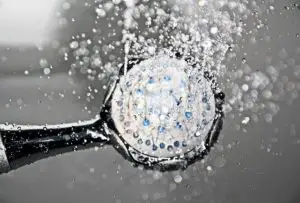
These are part of the luxury showerheads that most rich people have installed in their bathrooms. They are often attached to the ceiling or are placed parallelly to the floor to mimic the stream of rain while showering.
LED showerhead
These showerheads have LED lights integrated into them that enhance the showering experience. The lights are waterproof, which means that you won’t have to worry about electrocuting yourself. Installing these showerheads can immediately change the look and surroundings of the shower.
Other Things To Consider During Shower Fitting Installation
More than an activity, showering is an experience. Every person should experience a comfortable and relaxing shower once a day to rid them of the stress they have endured throughout the day.
So, when installing various shower fittings, there are other factors that you should look out for. Some of them include:
Shower temperature gauge
How often do you step inside the shower, not knowing how hot or cold the water is? We’d recommend investing in a temperature gauge if it happens pretty often. Most cheaper and more affordable shower gauges can be installed outside the shower. However, if you want fancier choices, shower valves come with a gauge integrated into them. Access to a temperature gauge allows you to set the temperature at an optimal range for a comfortable showering experience.
Focus on the flooring
When it comes to showering, you want stable and safe flooring too. The teak shower floor is quite a good choice. Not only does it make your shower floor like a professional spa, but it adds a premium look to the area as well. Teak flooring is also moisture-wicking so that it won’t get damaged as quickly as others.
Invest in a good shower curtain
Shower curtains are part of the interior décor of your bathroom. If you add a mismatched choice that doesn’t blend in well with the décor, there’s no point having one. Instead, go out of your way to get a shower curtain that is sturdy, water-resistant, and made with anti-mildew material. This will keep your bathroom clean and free from unnecessary diseases.
Integrate a shower filter
If you live in a city or state with extremely hard water, it will affect the quality of your skin and hair. Not just on you, hard water also affects the walls and the flooring in the bathroom. Installing a shower filter can address those concerns and get rid of the unwanted levels of minerals from the water.
Get a shower panel
If you have a small bathroom with minimal space, you will appreciate getting a shower panel. These are space-saving choices that can accommodate both the valve and the showerhead on them. Installing just one is enough to spruce up the look and utilize every inch of space available in your shower space.
Sort out storage and organization
Most of the shower spaces in the homes lack optimal shelving. It makes it difficult to store your bathing essentials in one place. So, instead of stacking all the bottles along with the bathtub or the floor, get a corner shelf to hold everything in one place.
Wrapping Up
Installing shower valves and other shower fittings takes time and a lot of effort. You need to familiarize yourself with the individual parts; you need to know what will go best with the family home you are working on.
We hope this article gives you a detailed look and insight into the optimal height of the shower valve and showerhead from the floor. If you have any further queries, leave them for us in the comments.
